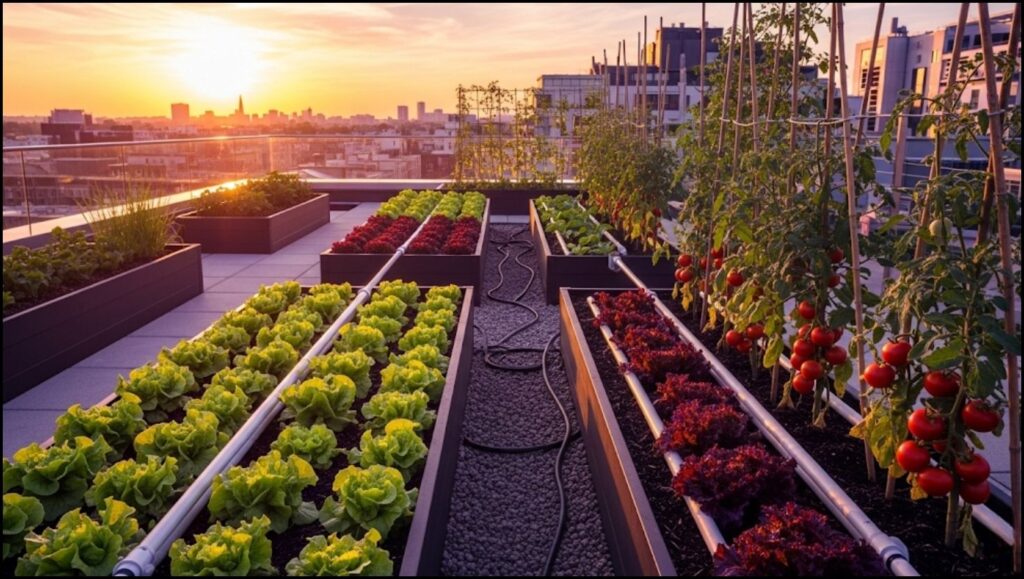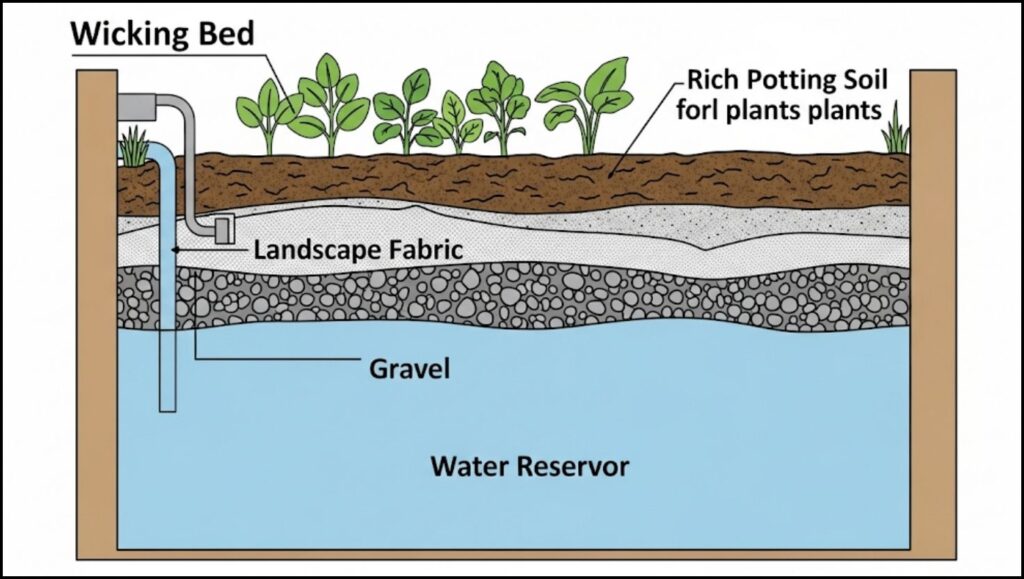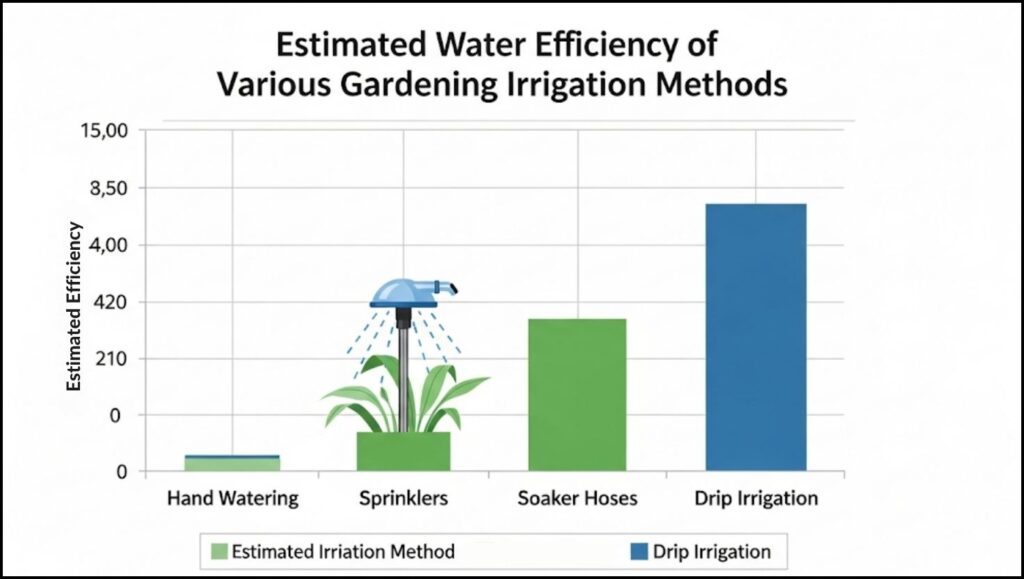
Across the world’s expanding cities, a quiet revolution is taking root in balconies, rooftops, and community plots. Gardeners are moving beyond traditional hand-watering, embracing sophisticated raised bed plumbing systems to conserve water, boost crop yields, and make urban gardening more efficient and sustainable in the face of growing environmental pressures.
The Growing Need for Efficient Urban Agriculture
As urban populations swell, so does the demand for fresh, locally sourced food. This trend, accelerated by recent global supply chain disruptions, has fueled a surge in urban agriculture. However, city gardening presents unique challenges, primarily limited space and the critical need for water conservation.
“Traditional watering methods can be incredibly wasteful, with as much as 50% of the water lost to evaporation or runoff,” said Dr. Alisha Vance, a senior fellow specializing in sustainable agriculture at the Global Food Initiative. “In an urban environment, every square foot and every drop of water counts. That’s where automated and semi-automated plumbing systems become essential tools, not just novelties.”
These systems help mitigate the time-consuming nature of daily watering, making food production more accessible to busy city dwellers and transforming hobby gardens into reliable sources of produce.
A Closer Look at Creative Raised Bed Plumbing Systems
Innovations in irrigation technology, once the domain of large-scale commercial farms, are now being adapted for small-scale urban plots. These systems range from simple, gravity-fed setups to smart, sensor-driven networks.

1. Automated Drip Irrigation Grids
Perhaps the most popular automated solution, drip irrigation uses a network of tubes with small emitters to deliver water directly to the base of each plant. Connected to a programmable timer, these systems ensure plants receive a consistent and precise amount of moisture. According to a study from the University of California’s Division of Agriculture and Natural Resources, drip systems can be up to 90% more efficient than conventional sprinklers.
2. Soaker Hose Mazes
A lower-cost alternative to drip irrigation, soaker hoses are made of porous material that “weeps” water along its entire length. Arranged in a maze-like pattern through a raised bed, they provide slow, deep saturation of the soil, encouraging robust root growth.
3. Classic Wicking Beds
Wicking beds are self-contained, self-watering systems that water plants from the bottom up. A reservoir at the base of the raised bed holds water, which is then drawn up into the soil via capillary action, or “wicking.” This method dramatically reduces evaporation and ensures the soil remains consistently moist without becoming waterlogged.
4. Integrated Rainwater Harvesting Wicking Systems
An advanced version of the wicking bed, this system connects directly to a downspout from a roof or awning. A rain barrel or cistern collects rainwater, which then automatically fills the wicking bed’s reservoir. This creates a highly sustainable, closed-loop system that reduces reliance on municipal water supplies.
5. Small-Scale Aquaponics Integration
Aquaponics combines aquaculture (raising fish) with hydroponics (growing plants in water). In a raised bed context, water from a fish tank, rich in nutrients from fish waste, is pumped to the garden bed. The plants and growing medium filter the water, which is then returned to the fish tank. This symbiotic relationship provides natural fertilizer for the plants and a clean environment for the fish.
6. Gravity-Fed Olla and Pipe Systems
This ancient technique has been updated for modern gardens. Large, unglazed clay pots (ollas) are buried in the raised bed and filled with water, which slowly seeps through the porous clay into the surrounding soil. A modern DIY adaptation involves using PVC pipes with small holes drilled into them, which are then filled with water and capped, functioning as a gravity-fed reservoir.
7. Solar-Powered Automatic Watering Kits
For off-grid or remote garden plots, solar-powered systems offer a high-tech solution. A small solar panel powers a pump that draws water from a reservoir (like a rain barrel) and distributes it through a drip irrigation network. Many kits now include soil moisture sensors that trigger watering only when necessary, maximizing efficiency.
8. Hybrid Hydroponic Drip Systems
These systems borrow from commercial hydroponics, using a nutrient-rich water solution instead of plain water. The solution is pumped from a reservoir through a drip irrigation network into an inert growing medium like coco coir or perlite within the raised bed. This method offers precise nutrient control and can lead to significantly faster growth and higher yields.

Overcoming Hurdles: Cost and Complexity
While the benefits are clear, the initial cost and perceived complexity of some raised bed plumbing systems can be a barrier. A basic drip irrigation kit can cost under $50, but more advanced setups like aquaponics or solar-powered systems can run into several hundred dollars.
“There’s a learning curve, certainly,” noted Marcus Thorne, a community garden organizer in Philadelphia. “But we’re seeing a rapid increase in DIY tutorials and affordable kits. Community workshops are empowering people to build their own systems, which dramatically lowers the cost and builds valuable skills within the neighborhood.”
As technology becomes more accessible and the urgency for sustainable living grows, these innovative plumbing systems are poised to become standard features in the urban gardens of the future. They represent a practical and powerful fusion of technology and nature, helping to cultivate not just plants, but more resilient and food-secure cities.
Surge in Garden Upgrades Puts Focus on Advanced Water Feature Plumbing Idea
